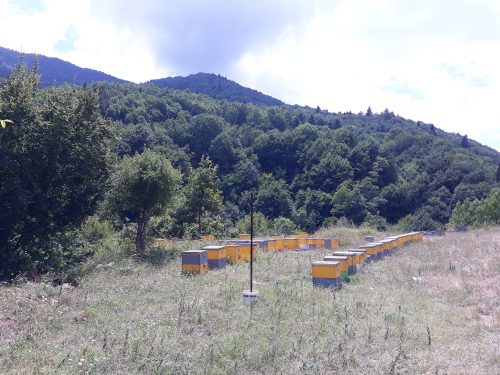Pollen and bee bread are very sensitive to high temperatures and light , meaning that it is important that they are kept in cold storage immediately after the moment they are collected till the moment they will be analyzed for pesticide residues as well as for their plant origin using molecular methods. Therefore the most promising method of transferring the pollen and bee bread samples from the CSs’ places to the National Coordinators’ Lab, in our case at the Division of Apiculture in Nea Moudania Greece, is to transfer them inside a big box filled with dry ice!
And this is what we did. We travel to the place of 3 out of 4 Greek Citizen Scientists in order to collect the samples they have been collected from their 3 colonies since almost the beginning of May. July is the month for thymus honey ccollection (from Thymus vulgaris mainly, but also from Thymus capitatus, Thymus atticus or Τhymus striatus) in areas near the see but also Castanea honey (from Castanea sativa) collection in the mountains.

Continue reading “INSIGNIA Sample collection Greek tour No 1!!!”

